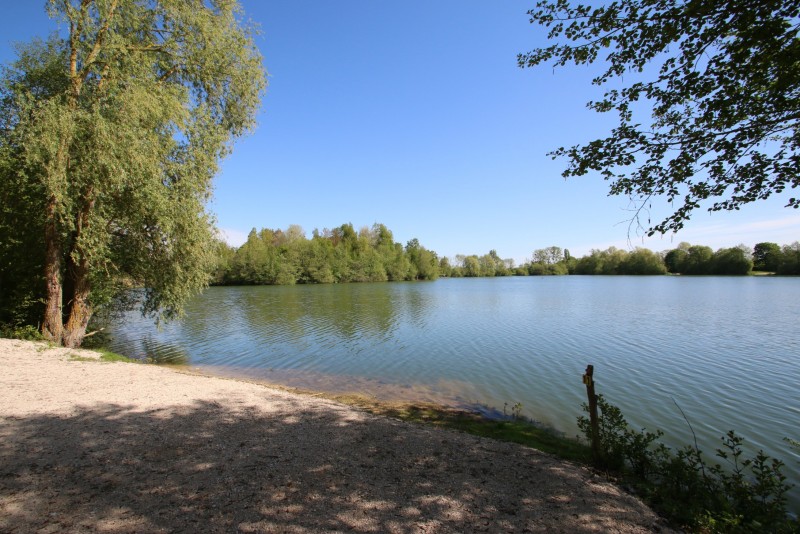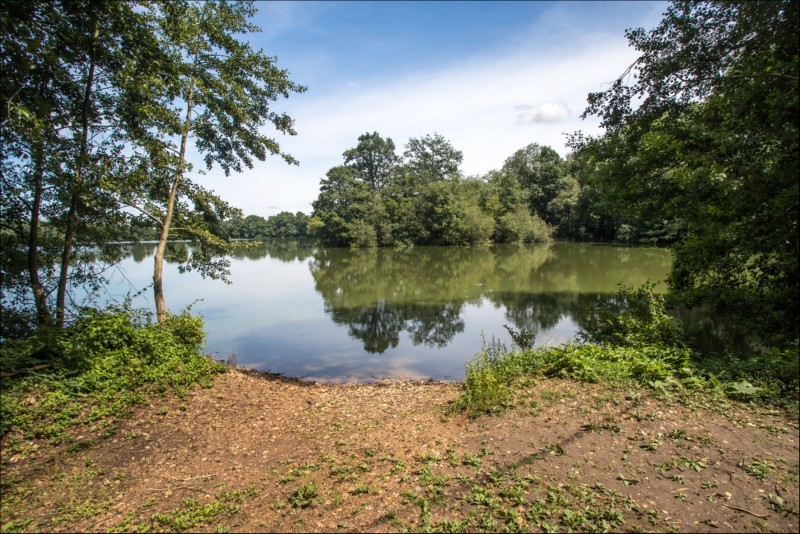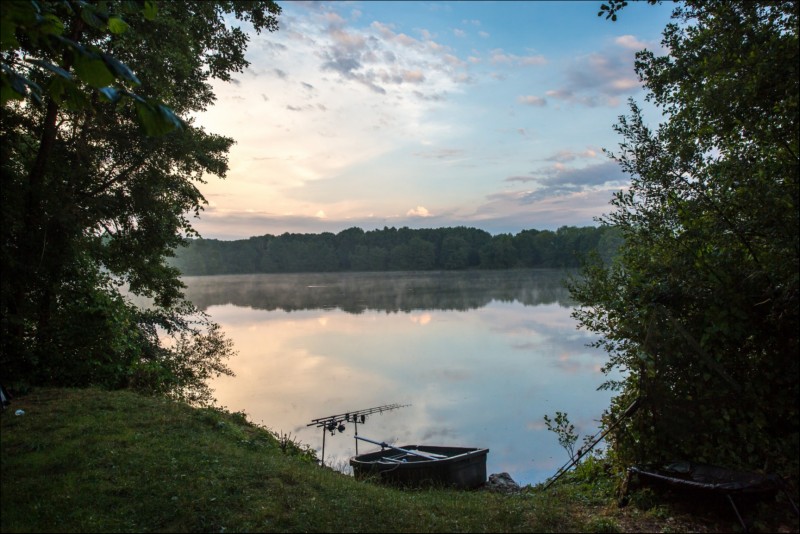The appeal of vast, windswept gravel pits is undeniable: acres of untapped, uncharted water, unsullied by angler pressure; the allure of the unknown; the chance of a previously uncaught leviathan. Question is: where the … heck do you start?
Pay too much attention to social media, the mags and myriad YouTube vids, and you’d be forgiven for believing that catching big French carp is a breeze. But it ain’t necessarily so; especially on the bigger waters, where finding fish can be a battle all its own.

Choosing your venue
As ever, choosing the right venue is paramount. So the natural starting point, always, is a trawl of your Facebook Friends. And of course a chat with the good people at Angling Lines who – having personally fished the many waters in their portfolio – can help you make the right choice, in terms both of the challenge and likely rewards.
This is important. Most of us have, at best, a week or two’s holiday at our disposal. So seek out folk who’ve fished your chosen water before; harnessing the power of the Interweb – social media, and the many angling forums – to get a heads-up on the going waters, areas, baits and approaches.
Doing Your Homework
Similarly, Google Earth will provide you with a detailed picture of the geography and topography of your chosen lake; and an invaluable starting point that could save you many hours’ trekking round the bank in search of fish.
On arrival at the venue, it’s then polaroids and ‘bins’ to the fore. The goal: to break the lake down into manageable ‘bite-size’ chunks; discounting areas that are clearly devoid of life; and identifying and evaluating likely features and patrol routes in light of the prevailing winds, air pressure and so on.
The usual rules apply. Islands, reed- and weedbeds, overhanging trees and snags all serve as carp magnets.
Margins, old stream beds and gravel bars provide natural roadways that the carp may patrol at similar times every day. And warmer winds point the way – with carp invariably following.
Meaning the north bank is always a good place to start.

Finding Features
Once you’ve selected your preliminary ‘home base’, time spent feature finding – with either the marker or, better, the Deeper (other fish finders are available!) – will provide a more detailed picture of your peg; and an indication of the right places to position your hookbaits.
Even the subtlest changes in depth or substrate can be significant. Therefore it’s worth placing your bait at different depths; hedging your bets as to where the fish feel most comfortable, and prefer to feed.
My first choice – for my first rod – would be the drop-off at the base of the marginal shelf, where carp will expect to find both natural food and discarded anglers’ baits.
Then, for the remaining two-three rods, I’d seek out the siltier areas on either side of any gravel bars; clear spots within weed beds; the edge of snags; island margins and so forth.
Nothing new under the sun, really. And an underarm flick into the margins is invariably my ‘starter-for-ten’ when I get to a new venue.
Generally, the only thing that will move fish from the margins is angling pressure which hopefully, on these larger venues, should not be so much of an issue. – especially if the swim in question hasn’t been fished in a while.
And with most big pits tending to have deep margins, I’m usually able to present a rig where I’m happiest and most confident: close in.
But I’ll remain vigilant. Being arguably the most cack-handed carper on the face of the earth, it is inevitable that, at some point, I will trip over a guy rope, set fire to a bivvy, fall in, or some such thing; in so doing potentially driving the carp further out into the lake – possibly dragging me out of my comfort zone, and requiring me to fish at range.
Hence the need for forward planning: doing our homework, back in Blighty to ensure we’re prepared for every eventuality.
Tackle
Casting accurately and consistently, to distances in excess of 150 yards, is far from easy, requiring specialised hardware.
Your rods should be up to the task, with a test curve of around 3.5lbs – to cope with heavy leads of 5oz or more – and a fast recovery rate, allowing the line to travel through the guides, with minimal resistance.
Big pit reels with decent line capacity are essential, accommodating 300+ metres of 15lbs+ line.
Ideally those reels will also be lightweight – lest your 200-yard retrieve become a wearisome workout – with a slow oscillation (enabling good line-lay, and again adding vital extra yards to the cast).
The use of braided mainline can provide you with a significant edge, given its narrow diameter and lack of stretch. (At this kind of range, mono could be moved tens of yards without a bleep on the buzzers.)
Where braid is banned, lighter – narrower diameter – mono mainlines can add valuable yards to each chuck. But of course they won’t withstand the force exerted on a big cast with a heavy lead.
So, where the rules permit, it is essential to incorporate a shockleader into the setup.
On lakes where leaders are banned, consider using a tapered main line.
Rigs-wise, for distance fishing, the watchwords are aerodynamic and anti-tangle. Which means one thing: choddies, which can be cast a very long way, seldom tangle, and ensure effective presentation whether they land on silt, weed or gravel.
A ‘weight forward’ style distance lead completes the business end.
Bite indication-wise, it’s bow-string tight lines all the way, ideally in conjunction with quiver or tension arm indicators.
Baiting at range can also be extremely tricky, so if you have access to a boat, so much the better.
With this in mind, it’s worth checking with the Angling Lines’ team, to determine whether your chosen venue offers boats for hire.

Bait Selection
As to the bait itself, boilies, pellets and/or particles all have their day.
But check whether the venue contains crayfish – horrible bait thieving creatures, with a taste for boilies, the presence of which may necessitate the use of large hardened hookbaits.
The last thing you need is to waste valuable time finding spots, baiting up, positioning baits – watching fish roll and crash and your spots – and miss out on a bite-time take because you’ve ‘been done’ by Mr Pinchy.
The flipside: carp love crays – so there is a positive to having them in your baited area – provided you’re confident your hookbait is resistant to their attentions.
Beyond this, standard operating procedure applies: on larger venues, as on smaller more intimate ponds, you should keep your eyes peeled for ‘signs’.
And, if at all possible, be prepared to move onto showing fish.
Because on big gravel pits, chances are if you can find ‘em, you’ve a very good chance of catching ‘em.
And maybe nailing a new French PB to boot.
Steve Calder

Comments